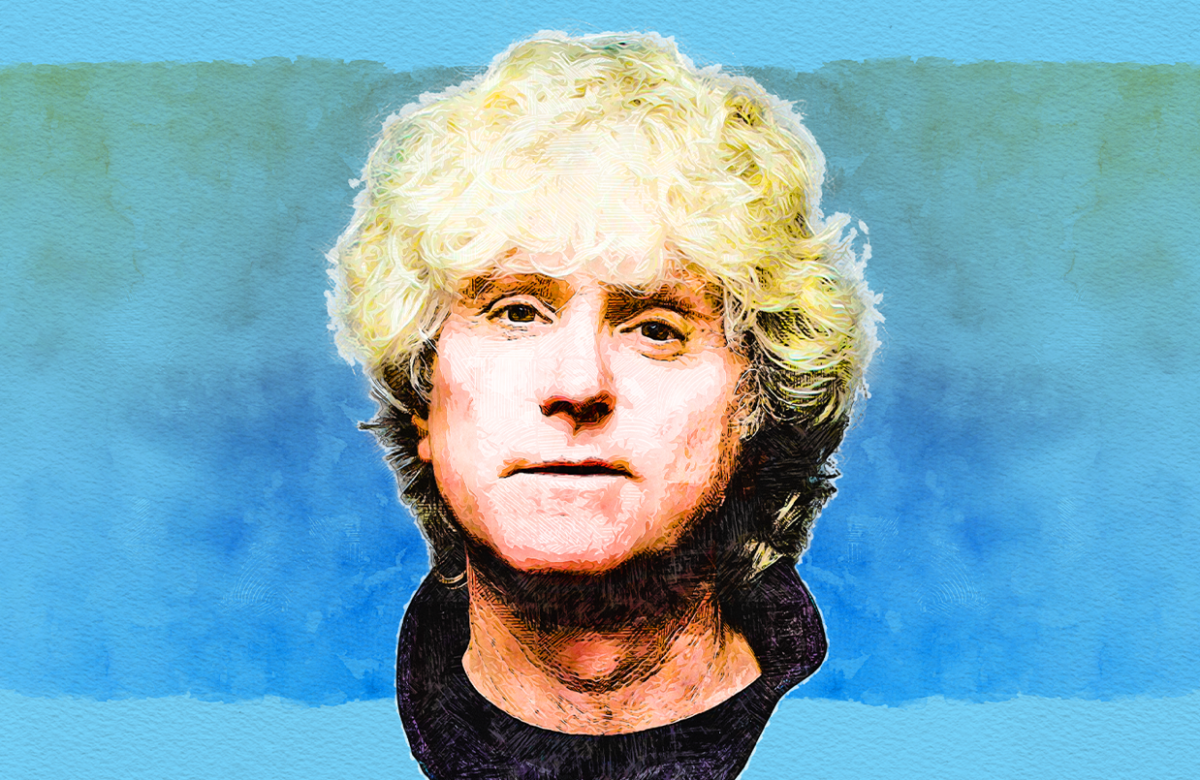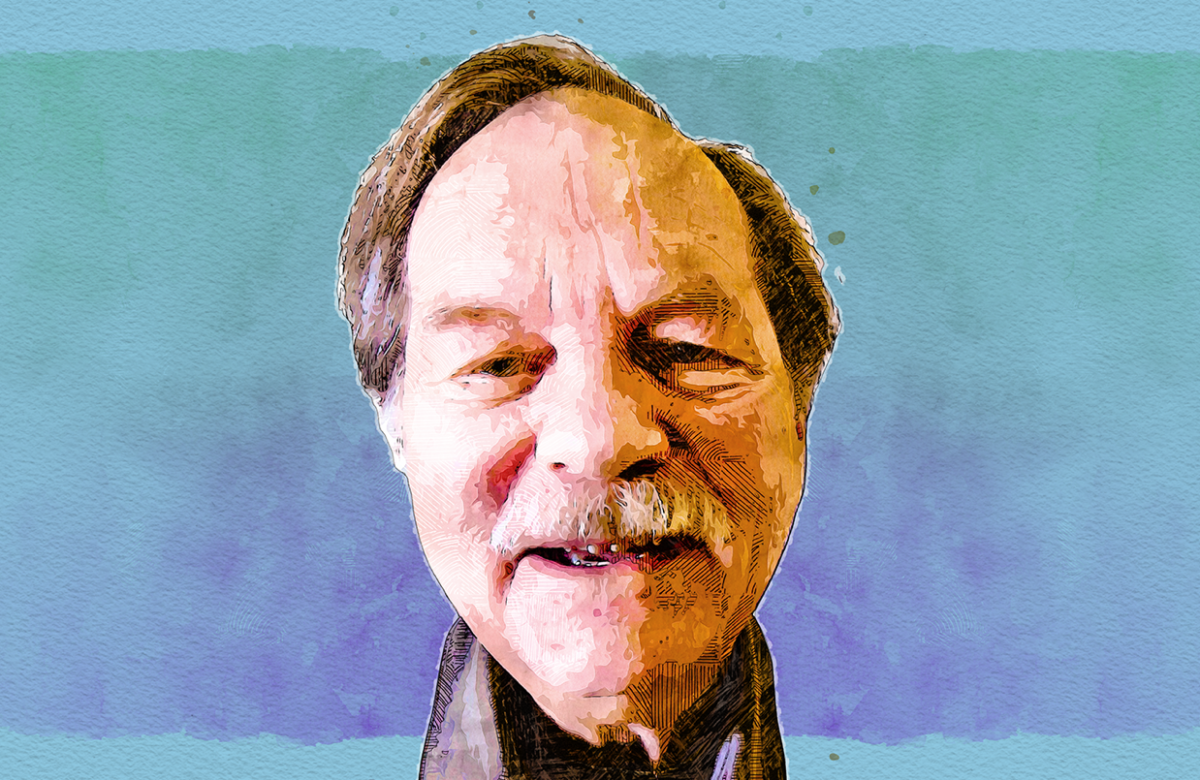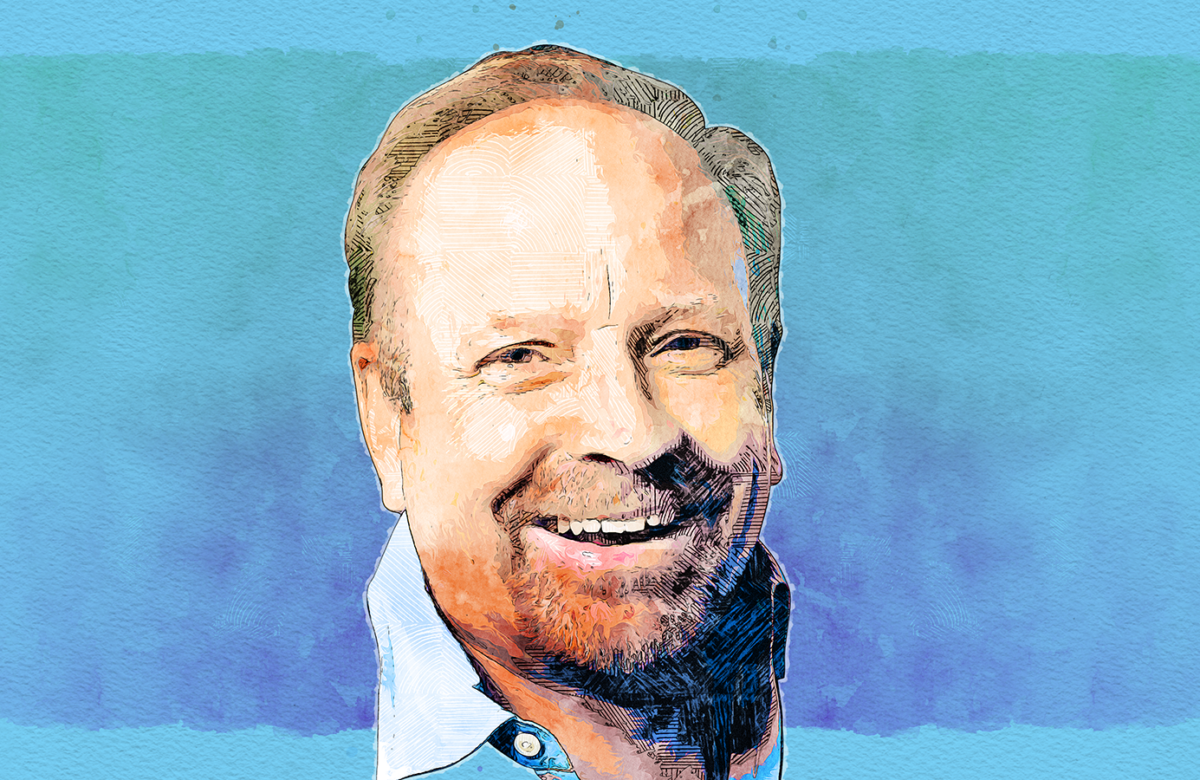Heroes and Structure: Missing Pieces in Our Pandemic Communication
Christopher Vogler says good storytelling can open minds and change hearts, even during a pandemic
- InterviewPost-truth pandemic
- February 1, 2023

If there’s one thing we can all agree on is that communication around the pandemic was chaotic. It didn’t help that information from supposedly credible voices had to compete with false assurances from global leaders, including the President of the world’s most powerful nation who claimed that the coronavirus would weaken in the warmer weather [It didn’t and there was no scientific basis for this statement]. Against this background of fake news, incompetent leaders with megaphones, and distrust in the scientific community, how could have our pandemic communication been better?
We spoke to Christopher Vogler on a video call in January 2022, when the world was still reeling from the impact of the COVID pandemic and months before the WHO said that the end of the pandemic is in sight. Christopher is not only a well-known storyteller; he teaches masterclasses on the subject. In addition to being a Hollywood executive, screenwriter, and author, he drafted a company memo for Hollywood screenwriters, which later developed into The Writer’s Journey: Mythic Structure for Storytellers and Screenwriters. He has also taught his craft at USC and UCLA. He is perhaps best known for his story contributions to Disney’s animated feature The Lion King.
In this conversation, which has been edited for length and clarity, we spoke about some of the ways in which scientific communication could benefit from the approaches he has recommended in his books, and where communication could be used to combat disinformation and doubt.
I’d like to start by asking about one concept you discuss in your books: of missing heroes and lost structure. There are many fake news stories and conspiracy theories being spread during the pandemic, mainly by anti-scientists. These seem stronger than the information coming from scientists. As a story consultant, what is your view on policy and science communication during the pandemic; what is lacking, and what can be changed?
The main thing to remember in communication is to maintain a human element. You need to try to present the scientific position in the most human way possible so that lay persons can see that these scientists are just like us. What happens in the world affects them too. If they have made mistakes or have not been on top of things, it can hurt them as well. Science is a learning process, with constant revising.
People may be afraid of science because they have doubts. They may isolate scientists and experts as an elite class above them. It’s good to show that scientists make mistakes and have to revisit their opinions. This is a very important principle that fearful people have exploited. They want to paint the picture that science should know what’s right, and if there’s a mistake or inconsistency, then that casts doubt on all its arguments. We’re just beginning to think about how to deal with doubt and overcome it.
In the United States, doubt has been weaponized. Just look at what tobacco companies did. Laws were being passed to require warnings on the packages. Tobacco companies fought this because they didn’t want these warnings; in some cases, they wanted to be allowed to encourage smoking as something that’s good for you, which they did for a long time. They cast doubt, with their own statistics and scientists, and this made it much harder for people to find the truth. Science involves mathematics and statistics, and many repeated experiments, which are not tools used by non-scientists and especially not by those who may be fearful of science. It’s hard to convince an individual about a large-scale problem, and it can be easy to sow doubt. Once the problem has affected you or your family, it’s harder to cast such doubt.
How would showing the human aspect of scientists help address fears and doubts?
The world today is isolating. Many of us feel like we’re in some sort of prison. In the United States, being an individual is a strong value and responsibility to the group is not as valued.
One of the beautiful things about storytelling is that it can open one’s mind to another’s life, which may be like yours in some ways, but also different. Perhaps you see they have problems similar to yours. If I see a person or character behaving one way in a certain situation and they run into trouble, or are punished, or learn a lesson, part of me automatically feels that too. This is a deeply human response, and this is where stories can bring people to this place of empathy, of feeling what the other person is going through.
In movies about science, writers will sometimes use subplots to convey the emotional aspect of the story. There may be some global catastrophe such as a sickness breaking out or an alien attack. But several levels below, people are dealing with ordinary human problems.
Those additional levels bring humanity: a feeling that this could be me. One Hollywood approach is that if the story is working, then removing the larger issue still provides a good story about people’s ordinary problems.
That’s a very interesting example. In the story of the pandemic, what subplots are we missing?
I’m thinking about the movie Contact with Jodie Foster. She plays a scientist who is focused on communicating with beings from other worlds. She’s also carrying her personal baggage. Her father died when she was very young. She wishes to be reunited with her family. Scientists can do very complicated work, with big machines and explosions, but at the personal level, there’s this person who misses their dad. The subplot brings those two worlds together, and that’s what we should be aiming for.

In recent times, I think of Dr. Fauci. He was attacked with political arguments and correctly went on the defensive about threats made against him and his family. He was saying “Your attacks are making people think it’s ok to threaten me and my family. You can’t do that.” Sure, some people will never like him, but some people may see that he’s just a human being and these issues affect his personal life.
You’re saying scientists should show more of their own stories so that people can relate to them and trust them. But where does this doubt stem from? You briefly touched on the issue of hierarchy—that we don’t think scientists are like us.
This is partly self-created by the hierarchical system found in science and medicine. For many centuries, doctors had to create the impression that they know everything and the patient should just do as they are told. At some point, I think people start fighting that, especially when it enters their personal lives. “Oh, I have to put on a mask, I have to get a shot, I have to put on a seatbelt.” If you don’t like these ideas, then one idea to turn to is that science is full of “fancy” experts who cannot be trusted.
There’s another key word in here: trust. It’s a very difficult thing to do, but we have to reestablish trust across all levels of society, especially in communicating all the good work done by science.
Why has it been so difficult for the science community to address trust? And why are they so far behind, say, the anti-vax or anti-science groups?
That’s a very good question. I have a theory about this. I’ve observed that people have very different ways of processing the world around them. Some people operate at a close-up level and can only see what is literally this far away [holds hand close to face] from them. If you’re of this frame of mind or lean to that side more, it is easier to be suspicious and doubtful, and maybe resentful, of all kinds of authority, not just science.
Other people, especially those with a scientific mind, tend to look at things from a greater distance, to see things far off on the horizon.
These are both viewpoints allowed by the human brain. And it seems there are forces in society now pushing these views apart. We have to try to bring them together.
Part of this disconnect has to do with language. Scientists are trained in the specific, often complicated, language of science. It’s different from what the average person understands. Science communicators have to modify their language because the other side can’t. The movement has to come from the science side, to make science more popular and accessible so that people can hear your message.
Let’s think about communication around the COVID-19 pandemic. People fumbled at first; there’s no doubt about that. Everybody, including the scientists, agrees that the uncertainty and contradictions in the way information was communicated was confusing. The health system needs to have a unit that deals only with communication. Science has to learn to speak in emotional terms, while also keeping it simple and consistent.
Have you seen any instance where science communication has been done correctly—where the right approach has been used?
I’m thinking of a recent film called Don’t Look Up. [The movie had dropped on Netflix in December 2021, a few weeks before this interview]. It’s a satire. It’s actually talking about climate problems, but they put a filter on it and instead made it about a comet coming to hit Earth. I thought they did a really good job of making it human, which is what I was talking about earlier. They showed the scientists living real lives, with relationship problems and the like.
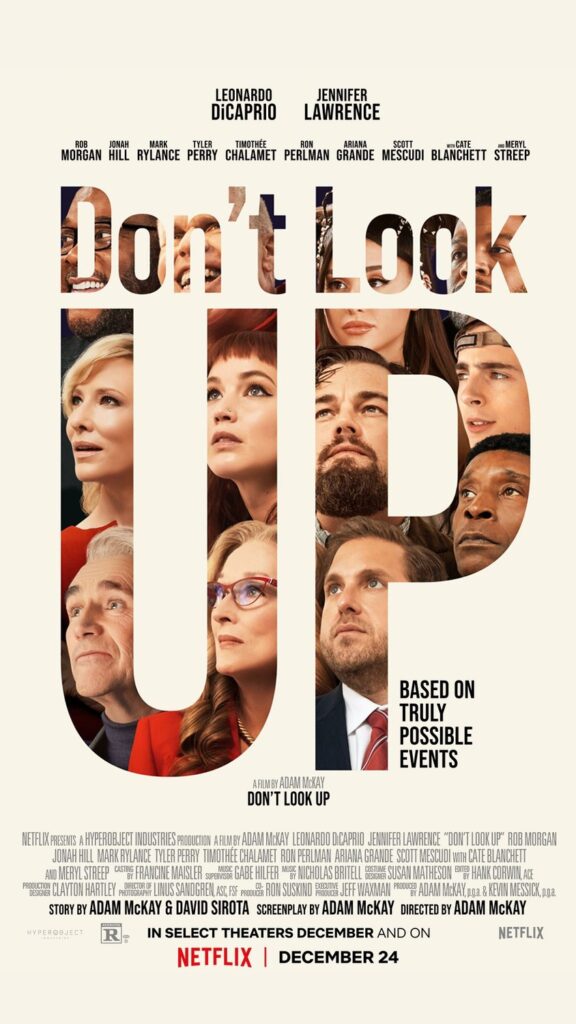
The reaction to this movie has been so polarizing; it split people on social media. Some people like myself, my wife, and friends, said, “Oh yeah, that was pretty good. Yes, it was funny, and I got the point. They’re warning us in a clever way.” But for many people, it was infuriating. I’m kind of shaken by this, because I thought they were doing it right, doing just what I talked about: humanizing it, keeping it simple, being consistent. Sometimes, this is the reaction that science gets. They tell a problem, give a warning, and the world goes “nah-nah-nah-nah” [Chris mockingly blocks his ears]. It’s almost a religion for some to dismiss and not trust what we are putting out there.
Maybe science communication is not using the right examples? Is there any other explanation?
This may be an explanation for why Don’t Look Up was so polarizing: it was hopeless. It showed the thing coming, and people acting silly, selfish, and divided. Nobody’s going to do anything and everyone’s going to be killed. There was no hope, and that may be one reason people reacted so strongly.
Maybe warning and scaring people is the wrong approach. Maybe it’s better to give them the fantasy that we can work together, that emotional and rational communication can meet, and we can save the world. That might be a way out of this problem.
“Fantasy” – that’s an interesting word you’ve used. As you mention in your books, most “hero’s stories” involve a challenge, something that makes them feel they have to take actions or be better to save other people or the world. If many people are acting selfishly during the pandemic, can communication inspire people to do the right things? Why do some people act selfishly, and how can science communication change that?
I’ve observed that stories can activate emotional and even physical reactions in different centers in the body. Some are low-level, almost animal centers that have to do with power, sex, and survival. Others are higher level, having to do with love and spiritual experiences. It’s easy to communicate to the lowest levels. But what good stories have are the subplots we’ve been discussing, which activate the higher centers of human possibility and can actually raise up the audience
Another series comes to mind, a show called Dopesick, about the oxycontin epidemic. That drug was distributed widely, and many people got addicted and died. Here again, on the show, they humanized it by showing one doctor, a very good man. He really tried hard, but he got misled by the drug companies. He got addicted himself, lost his job, and couldn’t practice medicine anymore. But that one doctor still tried to do the right thing. He overcame his addiction and tried to help others. It was so beautiful, and it took a big problem affecting millions of people and brought it down to just a few characters. This show offered hope, that they can make a difference. This is a great lesson for science communication: there are big problems that affect many people and you can’t do much about those. But you can do something in your own life.
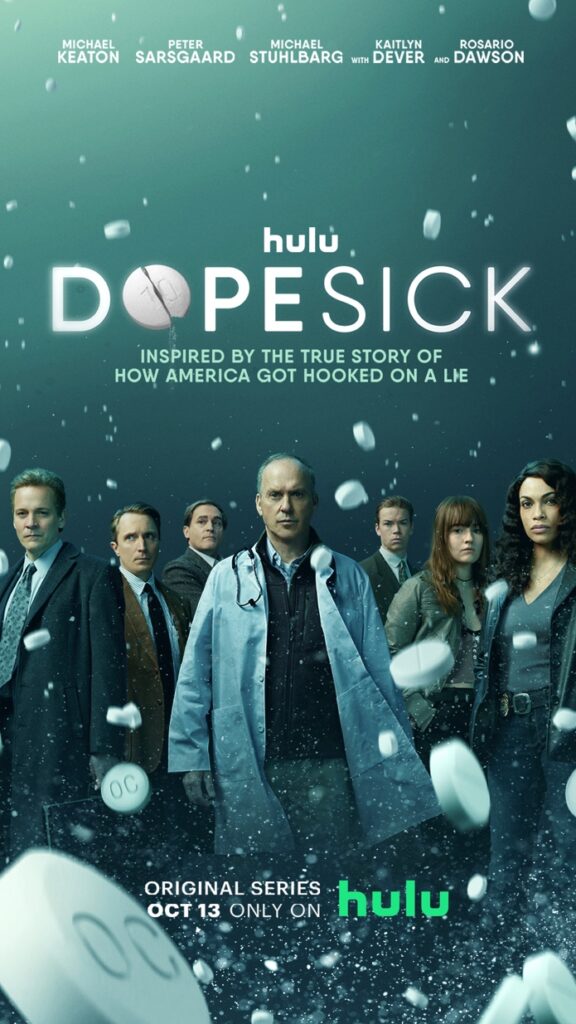
That show affected me and my wife. The next time we went to the doctor with pain, and they offered us those same drugs, we politely refused. We had seen the show, which communicated very clearly that these things are not toys, not some little thing you give for regular pain. I thought that that’s a good science story.
Do you see a difference in the way communication is done in the creative fields and in other industries? In the creative space, let’s say, Hollywood, the idea is to create stories that can be shared with other people. Do you see this in science communication?
The idea of communicating using stories is not new. If you’re trying to create a brand or product, you’ll often think about it and present it as a story of what consumers need in their life. An important concept here is wishing. People have wishes. We say in Hollywood that we’re in the wish fulfillment business. People’s lives aren’t perfect or they’re not what they’d like it to be. They wish they were lucky, beautiful, handsome, rich; there are stories that fulfill those fantasies. But I think it’s a good and noble wish to educate people about important, sometimes scientific, things that affect their lives.
People have wishes about these things too. They wish for an authority they can trust. They may wish for quick solutions to the problem. That’s one of the difficulties with COVID. People have an internal clock, and they can deal with bad weather for a season, but with COVID, this thing just goes on and on, even getting worse. That’s very difficult for people to process, and they wish for a quick answer or a quick way out. Hollywood has developed a way to think about the wishes of the audience. A part of communication is studying your audience and understanding what they’re wishing for. And then try to give them that without oversimplifying things, without watering things down.
This is one of the reasons why it’s so important to be consistent in your communication and keep things simple. When discussing major findings and events, you’re really dealing with the animal part of someone who is fearful and worried about their survival. Somehow, we have to reassure them that things are going to be okay. There’s going to be some change, but most things will stay the same.
Everyone is trying to picture the world around them. I read two newspapers every morning, and I try to create a picture of the world today and understand what’s going on. People are constantly checking their picture of the world, and that picture can change, especially if it comes from those they trust.
It’s hard to answer how we can tackle this in mass communication. People have tried to get scientists to move away from the cameras and let the movie star or musician deliver the message. In some cases, however, this has caused resistance. For instance, at award ceremonies, actors often get political. And there is a large part of the audience that says, “I don’t want to hear it from you. What do you know about politics? You’re just an actor.” People don’t consider celebrities to be experts. It’s probably better to get ordinary people that your target audience can relate to. People are so isolated in their own worlds. They look over a fence at these people talking to them: celebrities, experts, scientists, and so on. Somebody who looks like them and comes from their world is probably better. But if we have to communicate through celebrities, maybe we pick celebrities who look like they belong to that world.
Can you talk about your involvement in terrorist observation and how that might relate to this situation?
I was once called upon by a group at the University of Chicago that studies communication by terrorists, particularly videos used to recruit people to become suicide bombers. This group observed that the early videos were very simple, with an authority figure yelling, “Western people are bad. You have to kill them because they have killed our people.” Then, the group noticed that the tactics changed, that they adopted a more Hollywood approach, using something like my hero’s journey model to tell stories. One story had the ghost of a suicide bomber, who was successful in his mission, talking to you about his awakening and how he became a Jihadist and gave his life. I analyzed this with the group in Chicago and shared my views.
The group didn’t explore how we could use the same tools to make counterprogramming, so I was a little disappointed. An example is where someone was contemplating suicide, but something stopped them. We could look at what stopped them: they remembered their mother, their family, or someone else they wouldn’t be able to see anymore if they went ahead with the suicide bombing. Or maybe they realized how it would affect those around them, that they may not be seen as heroes but as fools. Or some other way of understanding the situation. This is what I was looking for: how can we make stories that show the other side.
If you were to take one of the appealing stories, such as anti-vaccine rhetoric, would you be able create counter-storytelling, as you wanted to in the terrorist case?
Yes, I think so. I’ve seen some shows that have done a good job of this. I’m thinking about Chernobyl. I think they dealt honestly with the problems of the scientists and with communicating the importance and danger of the situation. Although it was a dark and tragic situation, it still left me with a little bit of hope that maybe we can learn lessons and make sure it doesn’t happen again. This goes back to what I said before about leaving room for hope.
I’m also thinking about an old movie that was compared to Don’t Look Up, called Dr. Strangelove, which was about the problems we were having with Russia at the time. And that we had too many bombs and it was too dangerous. That one also ended with the destruction of the world, and they did it in a funny way that some people found entertaining. They communicated using humor, although there were a lot of people who resisted it even back then.
You’ve cited two movies that show how scientists can communicate more effectively. What do you think about scientists partnering with organizations that specialize in communication?
That sounds like what we need. I think there’s a limit to what the science-trained mind can achieve; it’s very difficult for them to change their language. It would be great if scientists could partner with people who have already impacted business, say, in advertising, sales, or marketing, and know how to do it.
We have a few people in the United States who serve both these functions. There’s Bill Nye, “The Science Guy.” This is his professional identity. Or, in Britain, David Attenborough, who talks about nature in such a wonderful way. There are doctors like that too, and they’re kind of controversial, because sometimes when you communicate in a way that people can understand, it becomes a little bit messy and not scientific anymore. But we need more of those people for sure.
If this pandemic were a movie, what kind of characters and subplots would you have in your version of the story?
I’d make my pitch about a group of people, including scientists and doctors, maybe an ordinary person who gets the first hints of the virus or has to deal with the first case. I’d maybe include a few people who react a certain way – one who says, “I’m not going to do what the doctor says” and one who says, “I should drink bleach because the President said so” – and show how their choices affect them. It’s simple to create several characters who represent different points of view. I would create a story with at least these levels: someone at the top, a scientist or medical person closer to the ground, and three or four people who react differently to what’s playing out. Maybe those people are friends, lovers, different generations within a family.
You often approach a story with an assumption. As a creator, and because I believe in science, I’m going to approach it as a problem that science can address. There’ll be mistakes and challenges along the way, but science is eventually going to save us. That’s my belief. Maybe a politically charged film would take the opposite view, but I would hope that we would make a positive story that shows how we won the war. This would be important, as a warning for future things that are definitely coming.
What’s important is communication that’s realistic, which shows the limitations, challenges, and failures, all in the interest of learning and trying to do good for people, which I think science does. People don’t get into science to be powerful or be the boss of everybody. Most scientists get into it because they’re interested in solving problems and they want to help people. That’s what I believe anyway.
Research papers are usually structured a certain way. Often, scientists discuss what they know, what they discovered, their limitations, and future development. But there seems to be a disconnect when talking to the public.
Yes, thank you for bringing this up. This makes me think of something – about knowing what you want to communicate. I think science can save the world, or someone may say science is trying to trick you and cannot be trusted. Those are assumptions, or what science calls a hypothesis. Then, you make the story and see how it pans out. Maybe it proves your hypothesis, or not, because stories themselves come to life. The characters become real to you and they steer you in some direction. You’ll get different answers. But generally, you create the story to match your assumptions. In technical writing, this is called the theme of the piece. A theme could be “love conquers all” or “science is your friend.” I think that would be a wonderful message.
That’s a very important part of teaching scientists to communicate: you must know your theme. Choices about presentation or importance can be determined once you know your theme. Whatever it is, it will be stronger if we’re conscious of the theme in our communication.
You spoke about the creator’s drive to share with other people. Lately, I’ve been meeting many researchers, and I’ve asked them if they feel the need to communicate their science to the public. Most of them said they didn’t, but they did it because it was part of their job. From your point of view, how should scientists think about sharing their creations and discoveries?
Scientists and communicators need to realize they’re not that far apart. There is creativity involved; there is inspiration. There are wonderful stories about scientists who thought hard about a problem and went to sleep, and they woke up with the answer.
What enters your mind or spirit? It’s best if you let it out, if you find a way to tell people about it, to share the vision you had. I think scientists have some work to do, and to get more in touch with their human side and communicate the excitement they feel.
And how would you explain to them why they need to do this?
I would ask them why they got into science in the first place. You have an origin story, just like every comic book hero, and it’s very important. Go back to that origin story – maybe some teacher inspired you or some show you saw, or maybe somebody gave you a microscope or a telescope, or you just went out in the backyard and found a caterpillar on a leaf. It’s rich material, and it can help motivate nonscientists to think that maybe there’s something they can learn or something wonderful here.
Imagination. Discovering the deep wishes of the audience or remembering what you wished when you wished you could be a scientist. For me, the wish I had was to be part of the movies; I wanted to tear the screen open and claim it because I found the world of movies to be so wonderful. I think for scientists it may be the same thing. That’s something that can be communicated. I think that would help raise the estimation of science in people’s minds.
Further reading, recommended by Christopher Vogler
- Wired for Story by Lisa Cron
- Writing in Restaurants by David Mamet
- Writing Down the Bones by Natalie Goldberg
- Story by Robert McKee
- Memo From the Story Department: Secrets of Structure and Character by Christopher Vogler and David McKenna
Article edited by Jacob P. VanHouten


